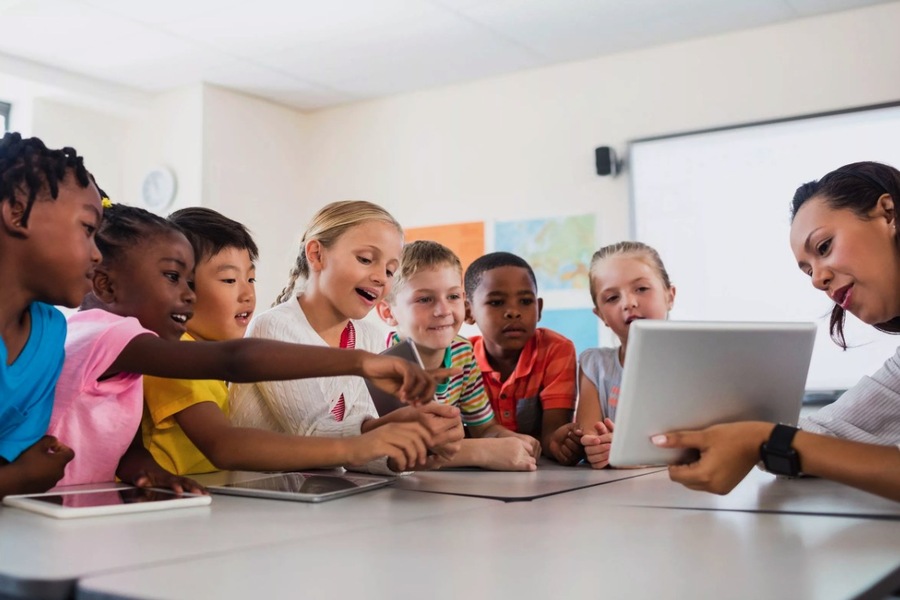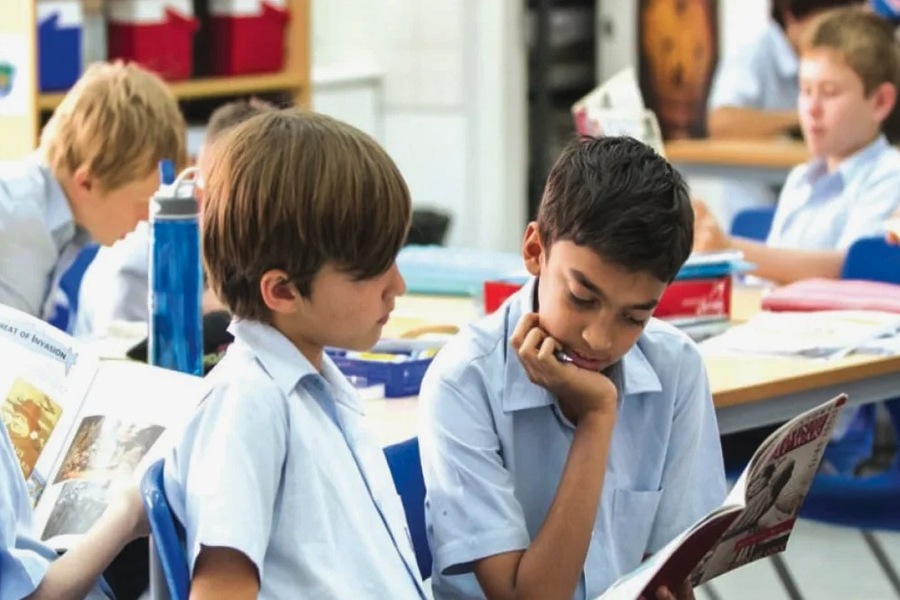Until 1970, the United Arab Emirates (UAE) did not have an organized educational system. The traditional form of education involved religious teachings in mosques and small private schools, focusing primarily on the Quran and Arabic language. This form of education, though valuable, was limited in scope and accessibility. The establishment of an organized educational framework began after the UAE’s formation in 1971, a turning point that ushered in a new era of education reform and development. Institutions like City American School now exemplify the advanced educational opportunities available in the UAE, reflecting the significant progress made since those early days.
The Birth of a Modern Educational System
In 1971, the UAE introduced compulsory secondary education, marking the beginning of a systematic approach to education. Schools began to open across the emirates, driven by the government’s commitment to providing universal access to education. This period saw the construction of numerous educational facilities, the recruitment of qualified teachers, and the development of a standardized curriculum aimed at promoting literacy and essential skills among the population.
Establishment of the K-12 Education System
The UAE’s school education system, known as K-12, includes 12 grades and is designed to provide a comprehensive educational journey from primary to secondary levels. Boys and girls study together until grade 7, after which they are separated. This system is structured to ensure that students receive a well-rounded education that prepares them for higher education and the workforce.
Primary School
Children enroll at the age of 6 after passing an interview and exams in English and mathematics. The primary school curriculum includes subjects such as Islam, Arabic, English, natural and social sciences, mathematics, art, and physical education. This stage lays the groundwork for foundational knowledge and skills, ensuring that students are equipped with the basics of literacy, numeracy, and scientific understanding.
Preparatory Stage
Aimed at preparing students for a serious future, the preparatory stage places special emphasis on moral education. New subjects like medical sciences or business management may be introduced to broaden students’ horizons and provide them with an early exposure to various professional fields. Upon completing this stage, students can choose between academic or technical directions for their further education, allowing them to tailor their education to their interests and career aspirations.
Secondary or Technical Stage
At this level, students prepare for the workforce by studying specialized disciplines such as computer technology, medical sciences, and tourism. This stage is critical for those aiming to enter the job market immediately after school. After passing the required exams, graduates receive a diploma of secondary vocational education or an academic certificate. Both of these qualifications allow entry into higher educational institutions, providing students with multiple pathways to further their education and careers.

Features of the UAE School Education System
Streams and Specializations
General Stream: All children initially enter the general stream. Based on their academic performance and abilities, they may move to a different stream, such as vocational or elite streams.
Vocational Stream: After grade 8, students can opt for a vocational path, transferring to a technical school for more specialized training. This stream focuses on equipping students with practical skills that are directly applicable in the job market.
Elite Stream: Designed for excellent students from grades 6 to 12, this stream emphasizes analytical, reasoning, and problem-solving skills in mathematics and science. It aims to prepare students for advanced studies in these fields and for careers that require strong technical expertise.
School Schedule and Facilities
-Classes are held only during the first shift, from Monday to Friday, to ensure students have a consistent and manageable schedule.
-Schools often have their own swimming pools, sports grounds, or football fields, enhancing the overall student experience by promoting physical fitness and extracurricular activities. These facilities are part of a broader effort to ensure students have access to a well-rounded education that includes sports and physical activities.
Curriculum and Exams
-The number of subjects can reach 40-50, with Arabic being mandatory and the Quran optional. This extensive curriculum is designed to provide students with a broad education that includes languages, sciences, arts, and physical education.
-After completing grade 12, students receive a certificate of secondary education. Exam results determine their eligibility for universities, colleges, or technical schools. This system ensures that students are assessed fairly and that their academic achievements are recognized through formal qualifications.
Private and Public Education
-More than 90% of school education in Dubai takes place in the private sector, with 194 private schools offering 17 different curricula to over 280,000 students from 182 nationalities. This diversity reflects the UAE’s status as a global hub and ensures that students have access to a variety of educational approaches and philosophies.
-Citizens of the UAE and GCC countries can attend local schools and universities for free, while foreign citizens typically attend private schools where classes are conducted in English. This arrangement ensures that education is accessible to all residents while also providing options for expatriates.
Education in Ajman
Despite being the smallest emirate in the UAE, Ajman boasts an advanced education system. The best school with an American curriculum in Ajman is the City American School (CAS). Tuition costs vary depending on the age of the child. For instance, in grade 3, the tuition fee is 9,000 AED. Additional costs include 2,500 AED for transport, with uniforms and textbooks paid separately. The school offers a comprehensive American curriculum designed to provide students with a high-quality education that prepares them for higher education and future careers.

The Role of Technology and Innovation
The UAE has also embraced technology and innovation in its educational system. Schools are equipped with modern facilities, including computer labs, smart classrooms, and access to digital learning resources. The integration of technology in education has been a key focus, especially in recent years, to ensure that students are prepared for the digital age. E-learning platforms and online resources have become integral parts of the educational experience, providing students with the tools they need to succeed in a rapidly changing world.
Conclusion
The development of school education in the UAE has been remarkable, transitioning from a lack of organized systems to a robust and diverse educational framework. The UAE now hosts branches of some of the world’s best educational institutions, offering comprehensive K-12 education that prepares students for higher education and professional success. The focus on quality, specialization, and inclusivity has positioned the UAE as a leader in educational advancement in the region. As the country continues to invest in education, the future looks bright for its students, who are equipped with the knowledge and skills they need to thrive in a globalized world.

Skier, father of 3, drummer, International Swiss style practitioner and RISD grad. Acting at the intersection of modernism and elegance to craft experiences that go beyond design.
